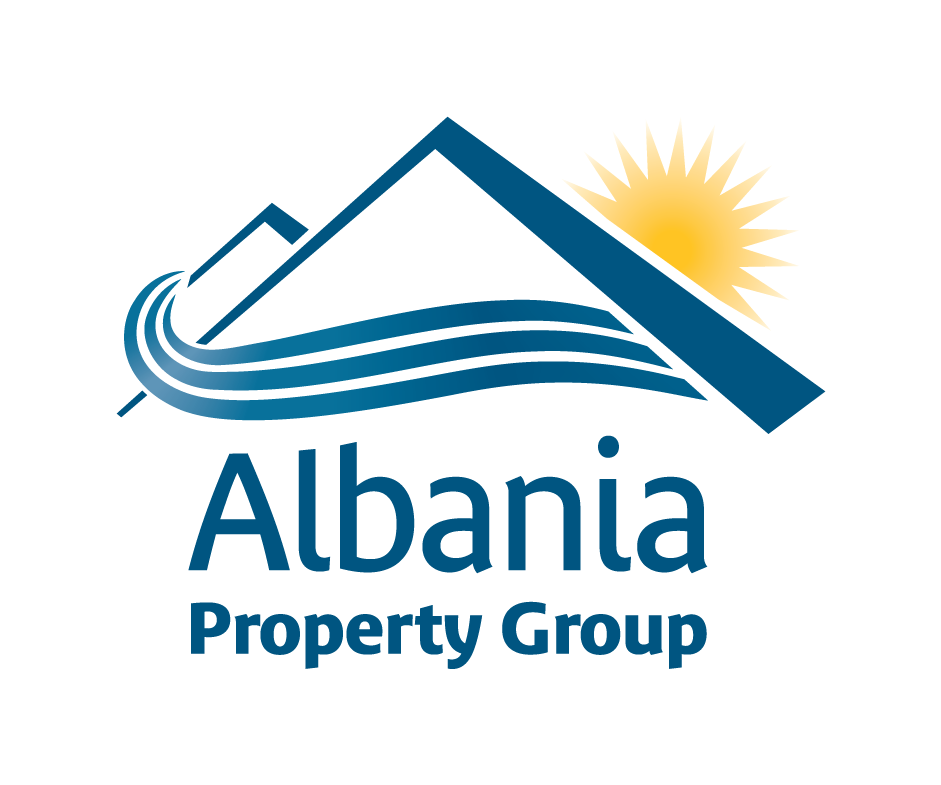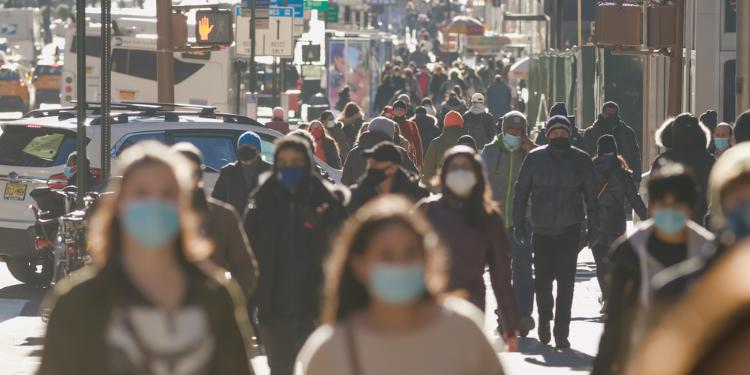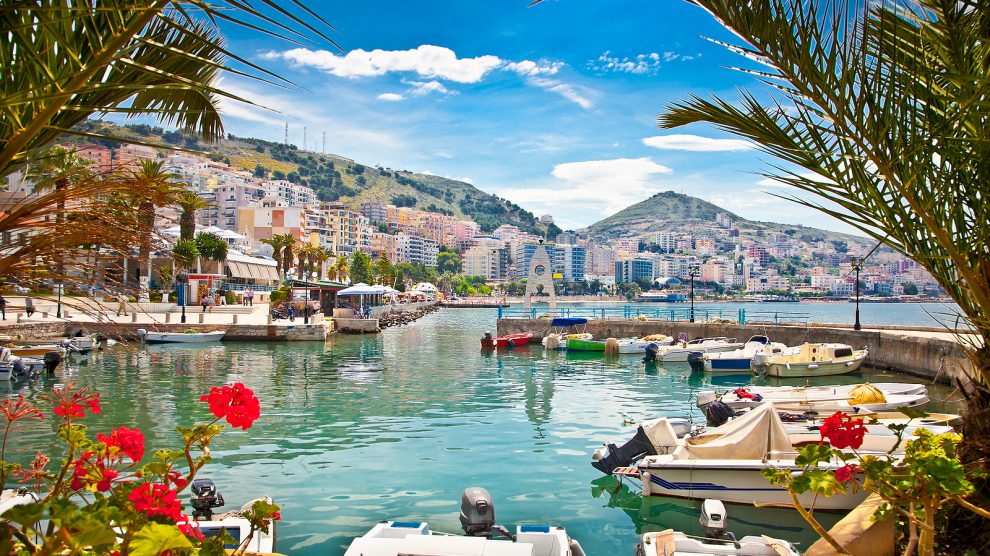

Hírek
Emaar Group from Dubai to Transform the Port of Durres
Prime Minister, Edi Rama has presented the project of the new port of Durrës. In a post on his Facebook profile, while showing the model of this project the Prime Minister says that the port of Durres will be one of the largest tourist ports in the Mediterranean Sea.-"And with the completed model in the urban studio of Emaar Group in Dubai, which is now located in the Port of Durres, where it will soon start the construction of one of the largest and most beautiful tourist ports of the Mediterranean, I wish all of you a good day", wrote Rama in the post. The project of "Emaar Group" is planned for 5 years and envisages an investment of 2 billion euros for the construction of the tourist port of Durres. The work is expected to start in the upcoming months. The construction will be separated into 5 phases and is expected to employ thousands of citizens and attract thousands of tourists from all over the world. You can see the full project below.
https://albaniatech.org/emaar-group-transform-port-durres/
New high-risk countries and immigration implications
The pandemic made everyone's lives complicated. After the first travel limitations, the international borders for many countries have opened (with some ongoing exceptions), and restrictions moved based on the seasonal waves and immunization throughout countries. Like everyone, you are probably starving for a new nomad adventure. In order to make your journey as safe as possible, you will need to be informed about the regulations between countries, as well as the risk areas around the world.
What is a high-risk country?
High numbers of Covid-19 cases and high death rates are the main indicators for considering a country as high-risk. However, this depends on the seasonal effectiveness of the virus, the number of upcoming visitors, and the overall immunization in the country (considering the numbers of available vaccines and tests).
In the US
While the list of risk countries is ever-changing, some countries are currently listed on the CDC's very high-risk list, so they are considered areas where travel should be avoided at the moment. Some are prohibited, such as China, Iran, the Republic of Ireland, Brazil, South Africa, India, the European Schengen area and the UK. These rules are, however, about to be changed for some places, allowing access to fully vaccinated citizens. The current rules are following:
If you are vaccinated by an FDA-authorized vaccine (Comirnaty and Pfizer-BioNTech, Moderna and Janssen), you are not advised to get tested before travelling outside of the US, but will have to be tested prior to your return and 3-5 days after)
You do not have to stay quarantine upon arrival
For non-vaccinated travellers, the current requirements apply:
Get tested before your travel outside of the US and prior to your return
Self-quarantine for ten days, which can be shortened if you have a negative result on the 7th day
The general international rules for travelling to a very high-risk area or a variant area are:
Wearing a mask
Keeping a safe distance in crowds
Self-monitoring for symptoms
In the EU
The European Union has a similar monitoring system. For instance, in Germany, the Robert Koch Institute lists countries based on their current case numbers, deaths and variants. While the consensus about risk areas is usually unanimous, you can always get informed about peculiarities on your country's website. For more information regarding the classification in France, check the governmental website; Il Ministero della Salute for Italy, Ministerio de Sanidad for Spain, Service of the Republic of Poland for Poland, Protocol of Arrival to Greece for Greece. While European countries have a similar framework, some have different rules when accepting vaccines and quarantine rules; that is why it is best to get informed on each country's official health ministry websites.
High-risk places today
High-risk places are regions where the influx of people raises the number of infections. These places can seem very inviting for travellers and expats who received a visa or decided to spend their digital nomad days in a new exciting destination. If you are preparing to live in a high-risk area, you should be aware beforehand of all the risks and how to prepare yourself for moving. Such places are the following:
Iceland is considered a risk area, meaning that even fully vaccinated travellers may get and spread COVID variants. While this beautiful country has the second-best healthcare in the world, the stream of people may put you at risk. Before entering the country, you will want to check the current entry rules. At the moment, people who have been infected and fully vaccinated people (with the two weeks after the second dose) are exempt from testing. For unvaccinated travellers, the rules are following: You must provide a negative PCR test taken 72 hours prior to your visit. Additionally, you might have to take a test upon your arrival at the airport and undergo five days of quarantine followed by a second test.
Children of the age 15 or younger are not required to do a test. If they are travelling with vaccinated people or people who have already had the infection or have been vaccinated, they are not required to stay in quarantine. However, if the children travel with someone who must go into quarantine, they must too. Information for scheduling a test are available on covid.is.
The Balkan Peninsula and its countries Serbia, Albania and North Macedonia report high numbers and are considered risk areas. If you decide to travel to these countries, you will need proof of completed vaccination, a certificate of having been infected in the last 30 days, a PCR test in the last 72 hours, or an antigen test in the past 24 hours. Subsequently, North Macedonia requires a vaccination certificate for all the bars and restaurants, both indoors and outdoors. For more information regarding the regulations for travel to North Macedonia, you can check on the website of the Ministry of Foreign Affairs. Information regarding travel to Serbia is available on their Ministry's website. For more information about travelling to Albania, you can check the website Visit Tirana.
Since the 1st of October 2021, Mauritius has lifted its strict restrictions for travellers. This has made the island a very attractive destination for expats who seek places with a warm climate and natural beauty. Due to the high numbers of travellers and infections, visiting the island at this time is not recommended. However, suppose you have already set your mind on visiting Mauritius. In that case, you will need COVID-19 health insurance coverage (unless you are a resident there), regardless of whether you are vaccinated or not. If you are vaccinated, you will have to present a PCR test 72 hours before departure, following another test on the fifth day of your arrival. If you are unvaccinated, you will have to book a quarantine stay for 14 days. You will have to provide a PCR test, before your arrival, on the seventh day and the fourteenth day.
The list of high-risk countries is long and changing constantly. Therefore, it is best to be careful with your travel and moving choices. The lesson of the pandemic is that it is important to be more mindful in our actions, so check about the requirements for visiting your destination and determine if your decision is worth the procedure. Additionally, healthy eating habits, supplementation, and good sleep will increase your overall health during travel. Good preparation and caution will help you to reach your desired destination safely.
https://www.expat.com/en/expat-mag/6075-how-the-new-high-risk-countries-are-affecting-immigration.html
Forget the French Riviera, the Albanian coast is the next big thing
The Albanian coast offers stunning views, crystal clear waters, and some of the best value for money property deals anywhere in the Mediterranean. No wonder buyers are flocking to the country from across the world.
According to a Colliers Albania report from April 2021, while the country’s property market experienced a significant decline during the initial outbreak of the Covid-19 pandemic last year, it swiftly bounded back: interest has since risen to new heights with the relaxation of coronavirus restrictions.
In the first quarter of 2021, the Albanian Institute of Statistics, Instat, said that the country registered GDP growth of 5.53 per cent, of which 1.09 per cent was attributed to construction and 0.58 per cent to real estate activity.
By far the most popular region of Albania for both local and international investors, competing with the capital Tirana, is the Albanian Riviera.
“There has been a very strong demand from buyers throughout 2021,” Ilir Konomi, managing director of the Albania Property Group, tells Emerging Europe. “We have been selling more and more properties on the Albanian Riviera to foreign clients, especially since February.”
The Albania Riviera is that part of country’s coastline situated along the Ionian Sea, described by Arber Brahaj of RealEstate.al as “a stretch of more than 100 kilometres of rock and crystal-clear water.”
According to Brahaj, amongst the most popular settlements along the riviera are the towns of Vlorë, Himarë and Sarandë, as well as the villages of Radhimë, Palasë, Dhërmi and Jala.
The appeal of the Albanian Riviera
“I think what makes the Albanian Riviera special is the combination of a picturesque Mediterranean landscape and the Ionian Sea, the beaches, the cultural background (traditional settlements and monuments), and the fact that until recently there was an abundance of undeveloped coastal land, which is scarce in north and central coastal Albania where construction has been intense,” says Loukas Triantis of the National Technical University of Athens, who has carried out research on urban and regional planning in the Himarë area.
Konomi believes that part of what makes property on the Riviera increasingly popular is the availability of typical Mediterranean scenery combined with prices not found elsewhere in this part of Europe.
“The prices are still affordable, between 1,000 and 1,400 euros per square metre for properties on the beachfront with a nice sea view. You can find these prices in the resorts at Lalzit Bay, Sarandë and Vlorë,” he explains.
“The exception is Dhërmi, the heart of the Riviera. Apartment prices there are approximately 2,000 euros per square metre, and around 3,000 euros [per square metre] for villas,” Konomi adds.
Bahaj says that Albanians consider Dhërmi to be the best beach in the country, and judging by the thousands of positive reviews on internet forums, foreigners seem to agree.
“Dhërmi is an old village, situated in the mountains overlooking the coastline, the rocks and thee sea,” he explains.
Despite the reasonable prices, the Albanian Rivera nevertheless has its fair share of luxury property, according to Bahaj.
“One of most famous properties near the village of Ksamil is the Kep Merli Residence, where popular singer Dua Lipa took her vacation earlier this month. Villas start at one million euros and reach up to four million euros, including private jetties for boats. For short term visitors, prices range from 900 to 4,000 euros per night,” says Bahaj.
Who’s buying?
Both Brahaj and Konomi say that their clients come from a variety of backgrounds, but note that different areas along the Riviera are popular with different groups of buyers.
“Albanian emigrants from Western and Northern Europe have been buying mainly in the area of Lalzit Bay and Sarandë, while the Ionian coast between Vlorë and Sarandë has been doing very well with Albanians from the capital, Kosovo, as well as Albanian emigrants,” Konomi says.
Then there are foreigners.
“In the Lalzit Bay area, while Albanian emigrants make up close to 90 per cent of all sales, we have also had Polish, Austrian, and few Czech clients. Sarandë is quite the opposite, 90 per cent buyers there are from countries such as Poland, Germany, Czechia, and the Nordic countries, including Sweden and Norway,” he adds.
Bahaj says that part of Sarandë’s attraction for foreigners is its proximity to the Greek island of Corfu, just a 40 minute ferry ride away.
“Many Greek agencies offer a tour to the city,” explains Bahaj, adding that, “much of the city is an archaeological site, with Butrint National Park just the south a UNESCO World Heritage site.”
Brahaj says that RealEstate.al have also made a number of sales at the Green Coast Residence in Palasë village in the Himarë region since the start of 2020, despite the pandemic.
“We have seen big investments in apartments, semi-detached villas and individual villas at prices around 1,450 to 2,100 euros per square metre. Buyers are mostly Albanians who live in Albania, and a few foreigners. We think that the main reason most of our buyers have been from Albania is that most of the properties were sold during the Covid-19 lockdown last year,” he says.
Konomi argues that Albania needs more foreign buyers in order to continue its upwards trend.
“Taking in consideration the fact that the presence of foreigners is still low, I believe that their numbers will grow by around five to 10 per cent over the next three to four years,” he says.
Better infrastructure is also likely to give the region a boost, says Brahaj.
“With the construction of two new airports in the cities of Sarandë and Vlorë, and a new road that will connect Vlorë with the rest of the Riviera under construction, allowing drivers to avoid the Llogara mountain, interest in the Albanian Riviera is expected to rise a lot in the near future.”
https://emerging-europe.com/business/forget-the-french-riviera-the-albanian-coast-is-the-next-big-thing/










